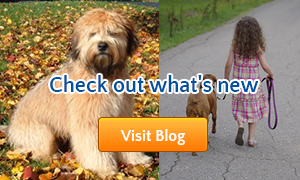The following question comes in from a valued client-
I have an 8 year old Pomeranian poodle mix and a 5 month old lab puppy. The two dogs do not get along. I have kept the puppy on a leash in the house but she will not leave the older dog alone. The little dog has a safe place on the couch but I continue to have to monitor the puppy on the leash. I have tried in the kitchen letting the puppy off the leash with the Pomeranian poodle . The small dog goes under a chair and growls and barks at the lab and the lab continues to want to play . The puppy has been to puppy kindergarten and seems to get along with other dogs that are her size. The older dog has also hid behind the couch when the puppy is loose even when the puppy is not bothering her. There has been times when I sit on the floor with the puppy and the older dog will lay on the couch and be okay. What should I do to help this socialization problem I have asked vets and a dog trainer and no one can give me any advice.
My response:
Thanks for your question. I always joke with my clients that I sound like a broken record when talking about behavior problems. It seems like every problem that someone has with their dog I always start preaching about obedience, obedience, obedience.
And therein lies your challenge. You need to achieve some really nice obedience with the lab in order to overcome this problem but, at the same time, your lab is quite young. It’s going to take a bit of time to achieve the level of obedience you need. Let me give you a few tips, though, to best focus your training efforts:
- Continue with your pup on a leash. This is still a good idea. At five months of age, though, and with a spirited dog I would also recommend having a training collar on your dog so that any corrections you need to give are more efficient.
- Focus on a few core behaviors. I would focus on teaching a ‘place’ command where your pup goes to a bed and stays put. This is one of the first things I do in a situation like this. If your puppy is staying in a bed it will allow the Pomeranian to have a little more freedom from fear around the house. It will also help you start teaching the ‘tone’ of your home that it isn’t appropriate to be running and bounding around the house.
- Along with a place command focus on sitting, lying down, and staying put. The biggest thing you can do for both of these dogs is have a lab that stays when told. Once this happens you can simply have the lab stay while you focus on whatever else you are doing. Right now you’ve got to be 100% supervisory with your pup but if you can get your puppy staying when told you can start to get some freedom and relief.
- Train the puppy to walk by your side perfectly; no pulling or wandering. Once the lab is walking well start walking the dogs together with the lab on one side and the Pomeranian on another. One of the best things I’ve found for helping two dogs bond together is to get them walking together. I find it best that you’ve got the dogs on opposite sides so that you act as a buffer.
- It wouldn’t hurt to do some touch up obedience with the Pomeranian. Obedience would help remind him of the leader that you should be for him.
With a puppy this young it’s going to take you a month or two in order to start gaining the peace in your house you are looking for. If you stay consistent over these next few weeks, though, you’ll start to see some nice results.
Happy Training!
UPDATE: After giving the advice we received a follow up question:
I have been working on place and am using a training collar and leash . When my dog is on her bed and I move away she whines and barks at me. Right now I am trying to ignore this behavior because she is staying in her place. Should I be doing anything about the barking. Sometimes my dog has toys on her bed should I remove them when I am working on place? Sometimes she will stay put and chew on a toy but then I was wondering is this a distraction?
My response:
With her being only five months old it’s great that she is staying put. It is a pain, though, to have the dog protest so much. The good thing about protest is that it shows the dog is understanding the training concept otherwise there would be nothing to protest. There are two main ways to deal with this issue:
1- Ignore it. Ignoring the behavior can work eventually as the dog realizes that she gains no satisfaction from the whining. This is what I call a ‘subtle’ training method and can take more time.
2- Address it head on. As the dog whines I would approach, grab the leash, give a quick correction and repeat ‘place’ to remind the dog to not only stay put but to correct the whining action. This is what I call a more ‘overt’ method and is more labor intensive but will typically get the job done quicker.








2 Responses to “Train Two Dogs To Get Along”
Please help, I have 2 male dogs terrier mix living together recently the are tearing each other apart, they cannot be in the same room with out argueing or fighting, what is the best course of action? Should I allow them to argue it out of their system or do I need to 100% separate them. Please help
The best course of action is the one I recommend in the article.
You don’t have any real obedience at all on the dogs right now so that is where you’ve got to start is with high level obedience.